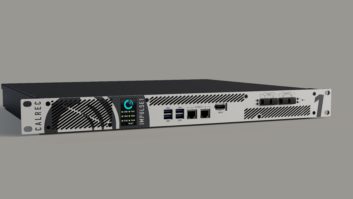Dave Harris, director of engineering and technology at ITFC in London, reflects on the completion of its workflow project.
After 12 long months the digital “Core” of services was born – an organically grown, flexible and cost-effective integrated infrastructure. With ITFC offering a range of content preparation and media management services across some of the biggest brands in the broadcast, cinema and corporate sectors, the Core would enable enhanced offerings.
The Core was built using an existing structure which included TMD’s Mediaflex application at the centre of the solution. This meant instant accommodation of tape-based content as well as being able to drive third-party hardware and software products. To make the Core successful, standalone components were sourced enabling us to add metadata exchange, additional workflow control and longer-term storage to the offering.
This included AmberFin iCR 5000 workstations for more ingest capacity and help with other digital services such as transcoding and QC. For an archive large enough for our storage needs we chose Quantum’s Scalar i6000, a data tape library with expandable cabinets for a maximum capacity of over 7000 terabytes.
To ensure smooth integration of the separate components into the Core and to have easy control of the library, Front Porch Digital’s DIVArchive content storage management system was implemented. This provides a seamless environment in which media can be moved as needed between online, nearline and offline storage. An additional advantage of DIVArchive is that it can be controlled by more than one application, which opens up some clever and flexible options.
The final component of the Core was Active Endpoints’ ActiveVOS software. This sits alongside Mediaflex, permitting rapid customisation of client-specific workflows. As a result clients could easily initiate workflows on their own within itfc via web services and customised web interfaces.
The challenge was to get all the components to communicate with each other. As some of the APIs and interfaces were not fully developed, we had a lot of customising to do for each component to talk to the others via the Core. Doing this in-house proved to be a huge advantage and the internal development team are now able to use the components in the most efficient way. Because of the complexity involved in integrating software and systems from three different suppliers, TMD managed the whole project.
As more kit is integrated into the Core, the whole becomes greater than the sum of its parts. The ability to pass information between a client’s internal system, or to control third-party equipment for one-off projects are just a few of the workflow possibilities. The system is now in use for clients including Five, ITV, London Films, Allegro Films and The Renaissance Foundation.
Linking the existing infrastructure has saved money without having to buy a lot of new kit, enabling a broader scope of services while remaining competitive.







